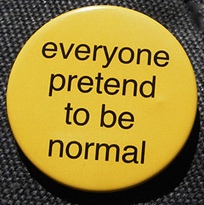By Dr. Ken Broda Bahm:
It’s normal to vaccinate your kids, at least for most of us it is. The exceptions to the rule have recently brought back a disease the U.S. “eliminated” in 2000. In the first month of this year, measles visited Disneyland, and then infected hundreds of people so far in fourteen other states. This unexpected comeback is due in large part to those who don’t vaccinate based on personal beliefs about autism and other risks. As long as the numbers of anti-vaxxers stay small, then something called “herd immunity” continues to protect us all: If 94 to 96 percent are vaccinated, then the remaining 4 to 6 percent essentially enjoy the same protection. But if the numbers of unvaccinated get even a little bit larger, it reaches a tipping point and “welcome back measles.”
When it comes to vaccines, the norm makes a big difference. And when it comes to vaccine avoidance, local norms make a big difference as well. Epidemiologists have noted the existence of areas around the country, like Marin County, California, where high rates of “personal belief exemptions” have created unique pockets of disease risk. In fact, the popularity of an anti-vaccine view among more affluent liberals caused some to jest that one could “put a pushpin everywhere there’s a Whole Foods and draw a circle around that area” to predict disease risks. Why would it be so localized? Because parents ask other parents, and if enough of those other parents say “I don’t vaccinate,” then it becomes sufficiently “normalized” that it feels safe and appropriate to go without the vaccine. This benchmark question of “What is normal?” is important in opinion formation and in persuasion. When jurors report their own attitudes and evaluate the choices of others, they will look for those norms as well. This post shares a bit of research on the importance of what is called “normative social influence” and point out four ways it can normally affect trials.
The Research: It is Normal to Need Norms
 The classic study on normative social influence was conducted by Solomon Asch in 1951. The basic design of the study — replicated in a number of studies since — was as follows. A naive research participant would enter a room with what he thought were other research participants, and all would engage in a perception task. For example, they would pick out which of three lines was the same length as another line. To the average observer, the answer was fairly obvious. Only the trick of the study was that the others in the room weren’t really research participants, they were confederates hired and trained by the experimenter. After a number of trials in which the confederates, along with the research participants, would all pick the correct answer, the confederates suddenly switched and would start unanimously picking the wrong answer. The research participant who heard their answers first, went along with the group, modifying his own answers in order to correspond to what the others were saying. “If you all think the middle choice is the right one,” the participant said in effect, “then that is what I think as well.” Without the confederates there, the participant was wrong less than one percent of the time. But with the confederates all voicing the same wrong answer, the participant also gave a wrong answer in 75 percent of the trials. And the larger the group of confederates, the stronger the effect.
The classic study on normative social influence was conducted by Solomon Asch in 1951. The basic design of the study — replicated in a number of studies since — was as follows. A naive research participant would enter a room with what he thought were other research participants, and all would engage in a perception task. For example, they would pick out which of three lines was the same length as another line. To the average observer, the answer was fairly obvious. Only the trick of the study was that the others in the room weren’t really research participants, they were confederates hired and trained by the experimenter. After a number of trials in which the confederates, along with the research participants, would all pick the correct answer, the confederates suddenly switched and would start unanimously picking the wrong answer. The research participant who heard their answers first, went along with the group, modifying his own answers in order to correspond to what the others were saying. “If you all think the middle choice is the right one,” the participant said in effect, “then that is what I think as well.” Without the confederates there, the participant was wrong less than one percent of the time. But with the confederates all voicing the same wrong answer, the participant also gave a wrong answer in 75 percent of the trials. And the larger the group of confederates, the stronger the effect.
More recent research has pointed to confidence as the mediating influence. As I’ve written recently, highly certain and confident individuals can be less susceptible to bias. This year, a study (Binning et al., 2015) used polls rather than confederates in order to convey a sense of normalcy. In that study, researchers found that assessments of the effectiveness of President Obama’s economic policies were more influenced by polled opinions on perceived effectiveness rather than by actual evidence of economic effectiveness. Only after participants engaged in a “self-affirmation” exercise were they more likely to be swayed by evidence that conflicted with the polls.
The Implications: Notice the Norms that Matter to Your Case
We regulate our own perceptions based on what others are perceiving. That, by itself, isn’t necessarily a bias. It may be rational to consider what others think. You might say that the concept of negligence itself — to act or fail to act in a way that differs from what a reasonable person would do — is itself a norm-based concept. So a reliance on norms isn’t necessarily a bias to be rooted out, but it is something important to think about when considering how you’ll try your case.
What’s the Norm in Voir Dire?
A perception of what is normal can influence responses given in voir dire. That is one reason for preferring the supplemental juror questionnaire, since the panelists cannot observe and copy the responses of their venire-mates. In group oral voir dire, however, the perception of a general response from the panel can create a kind of herding instinct that litigators should account for. That effect creates the need for questioning attorneys to carefully assess where the majority is likely to be in order to avoid singling out their supporters. That assessment of the likely majority provides a good reason to do mock trial research or a mock voir dire prior to trial.
What’s the Norm in Standard of Care?
The concept of a “standard of care,” is a staple in medical malpractice cases, but I believe that the underlying concept matters in nearly all cases. The question of what a reasonable doctor would have done in similar circumstances parallels the question asked, if not in law then in practice, about other cases: What would a reasonably careful company have done in designing its product? What would a reasonably cautious patent holder have done in defending their idea? What would a reasonably considerate company have done in protecting their contract? In every case, I think it helps to search for the de facto yardstick that jurors will want to apply in assessing conduct.
What’s the Norm in the Field?
When defending a company, the question of what other companies do often comes up. A product manufacturer is less likely to be tagged for a lack of warnings if its competitors provide no similar warnings, and a business partner is less likely to be faulted for not sharing information if jurors believe that it is normal for all partners to keep some things to themselves. Even if the law sets a different bar, the standard set by peers is likely to be the persuasive yardstick. But litigators should beware of a potential bounceback effect of this kind of appeal. After all, if safety requires one thing and the entire field is doing another, then perhaps what’s needed is a large public lesson delivered via punitive damages.
What’s the Norm on the Jury?
Other Posts on Group Influence:
- Help Jurors Stay Off the Bandwagon
- School Your Jury (Like Fish)
- Beware the Herding Instinct in Opinion Formation
______
Asch, S. E. (1951). Effects of group pressure upon the modification and distortion of judgments. Groups, leadership, and men. S, 222-236.
Binning, K. R., Brick, C., Cohen, G. L., & Sherman, D. K. (2015). Going along versus getting it right: The role of self-integrity in political conformity. Journal of Experimental Social Psychology, 56, 73-88.
Photo Credit: Elisa Dudnikova, Flickr Creative Commons (promotional button from the film Little Miss Sunshine)
Experimental Image: Wiki Commons.
